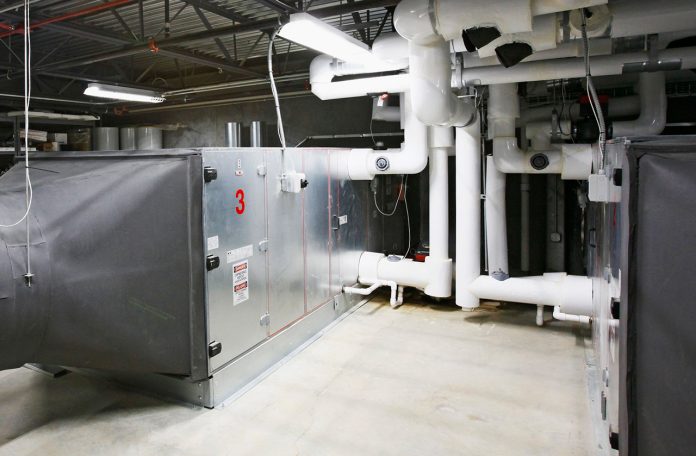
The optimum climate parameters for embryo development – temperature, humidity, and the balance between oxygen supply and carbon dioxide release from the incubator – are the same regardless of the climate zone in which a hatchery operates, up to an altitude of 1,200 metres.
Developing embryos produce CO2 and heat, and moisture evaporates from the eggs. Much of the heat produced is collected by the water-cooling system and the rest is removed, together with the excess moisture and CO2, through ventilation. Used air is replaced by fresh air. The purpose of ventilation is to provide fresh air and to remove waste products. In addition, fresh air, which is usually drier and cooler than the air inside the incubator, lowers the humidity and absorbs some of the heat produced by the embryos. Ideally, the air exchange is balanced so that the incubator’s internal humidifiers, heaters and coolers simply have a corrective function and work only when necessary. Modern incubators are technically able to fully control their internal microclimate. These systems are designed to maintain or restore the climate quickly after a machine has stopped or started, or if climate parameters deviate from the set points. It is preferable, however, not to have to activate the systems because intensive heating, cooling or humidifying destabilise the uniformity of the internal microclimate. It is a question of balancing the need for fresh air with the need to maintain a stable internal microclimate.
If fresh air were taken directly from outside the building, its parameters would reflect the local conditions: the season and daily fluctuations in temperature and humidity. Even in a moderate climate zone, temperatures can vary by up to 50 °C throughout the year, and daytime and night time temperatures can fluctuate by 20-30 °C. Likewise, humidity can vary substantially over 24 hours, depending on the weather conditions.
These fluctuations in the fresh air parameters represent a challenge for incubators. In order to achieve the desired set points, intensive heating, cooling and humidifying would have to take place, but this would reduce the uniformity of conditions inside the cabinet. To overcome this problem, air entering the incubator must be preconditioned. The optimum temperature range is 21-27 °C and RH range 50-60%. Creating these stable parameters requires an Air Handling Unit (AHU). Preconditioning is a costly process and therefore prepared air should be valued.
In practice, to lower the influence of the outside climate conditions, fresh air comes either from a room inside the hatchery building or a specialised air preparation room that can supply preconditioned air hygienically and economically. The air in either of these places should be seen as a precious resource, which must not be wasted. It should be carefully stored and protected, and only the necessary amount used.
A setter with space for 100,000 eggs needs an average of 400-500 m3 of fresh air per hour. So, a hatchery with many incubators will need a multiple of this amount of fresh air.
If you do have a system that provides regulated air, however, the outside climate does not matter. Easy to say but difficult and … not cheap to do.

















